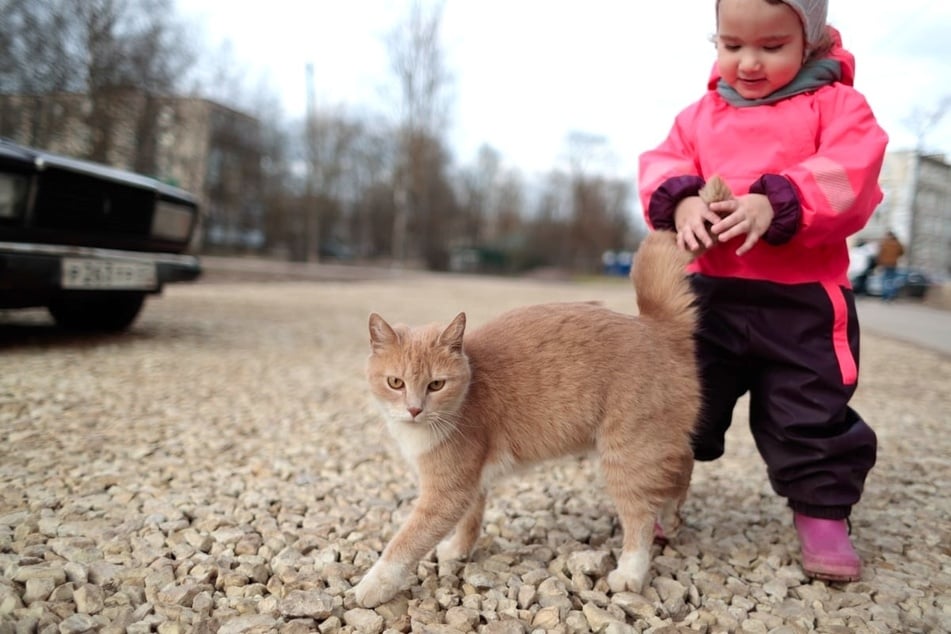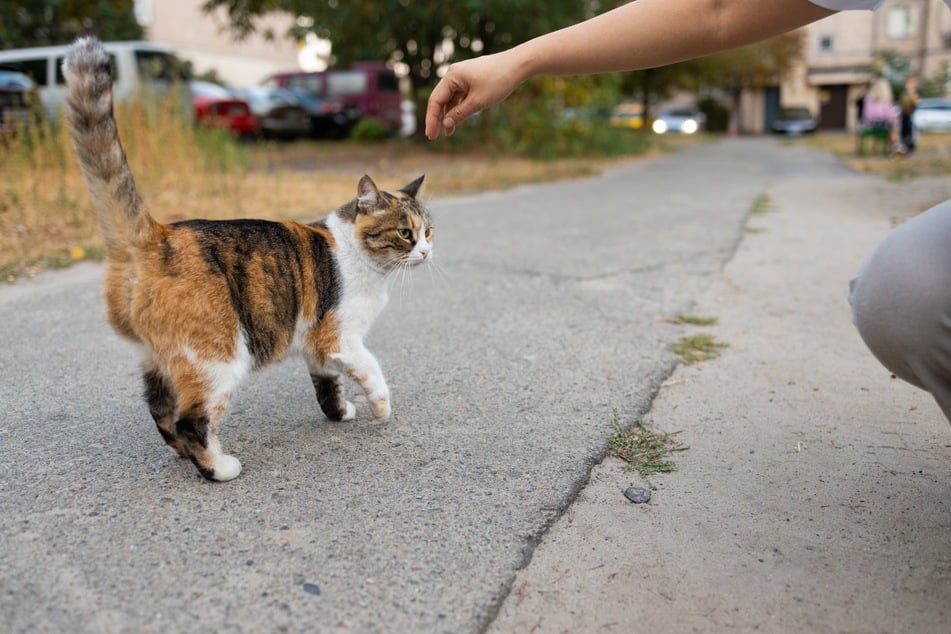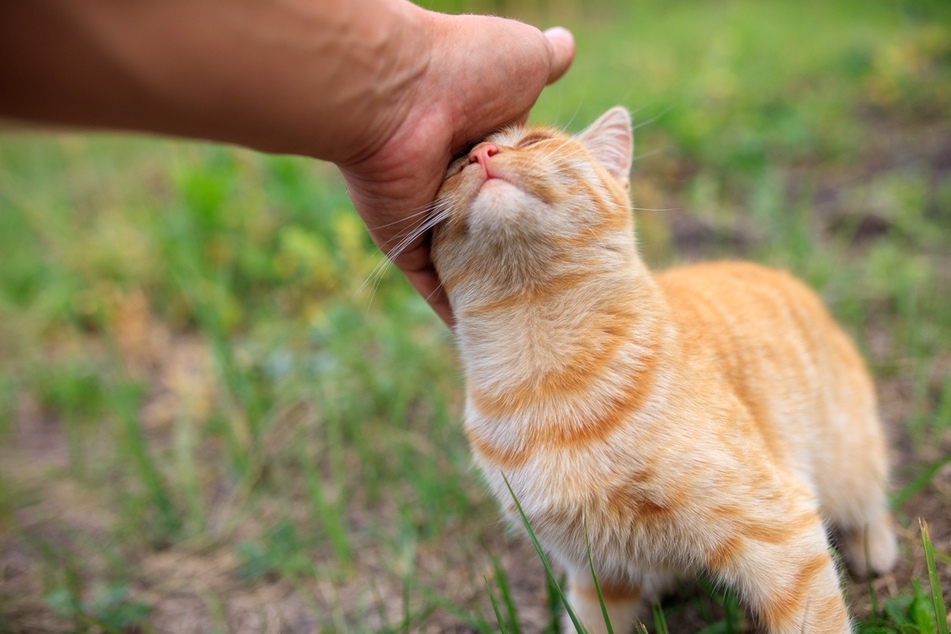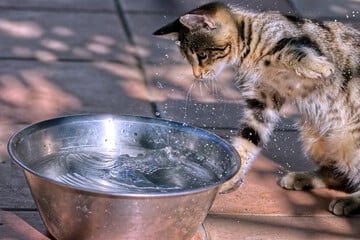Can I touch and pet my cat's tail?
Why does your cat behave so strangely when you start petting its tail during a cuddle session? Is it okay to touch and pet your cat's tail and, if so, how should you do it?

Your kitty cat probably loves a good snuggle, getting smooched on all areas of its body by a human so devoted that they'll provide all the attention in the world. Yet, sometimes, your kitty also gets a bit weird, doesn't it? Sometimes, your cat will lash out for no apparent reason, just because you touched its tail.
What on Earth is behind this strange behavior? It's time that we guide you through how to stroke cat tails. Is it okay to touch and pet your cat's tail? Why does it keep attacking you, and how can you tell when it's alright?
Is it okay to pet your cat's tail?
While touching your cat's tail is not going to actively hurt it, many cats would prefer if you left it alone. It might seem light, fluffy, and enticing, but due to its extraordinary sensitivity, as well as its importance to a cat's mobility, it's an area of the body that many kitties are rather protective of.
It's not advisable to touch and pet your cat directly on the tail until you know what your cat likes and in what mood it likes it. Children, in particular, should be simply taught never to touch a cat's tail. This is simply a safety precaution on the child's account, as our feline friends can be very unpredictable when being touched on the tail.
Similarly to the belly of a cat, they sometimes like to be petted there, and they sometimes don't. Just as when you rub a cat's stomach, make sure to pay attention to their physical reactions when touching the tail, and if your kitty shows signs of agitation, stop immediately.
Finally, it is okay to pet your cat on the base of their tail, just above the butt at the end of their back. They enjoy this area a lot and will bump their bum up into the air and into your face when you do it. Just know that when cats put their butt up, it'll be a short-lived thing, and they'll often react to having had enough of it in a rather violent manner.
The hair follicles on a cat's tail are sensitive, and it can be a little unpleasant for a cat to be stroked there. While some cats like it, make sure to get to know the kitty before you touch it on the tail.

Why does my cat meow when I touch her tail?
It entirely depends on the tone and type of meow that you're talking about. Your kitty communicates primarily through its physical body language but also through the noise it makes when you pet it or when it wants to get your attention. If your cat meows a lot, it is likely either expressing pain or trying to communicate something to you.
Here are the different cat meows you'll get when touching its tail:
- Angry, aggressive, yowling: Your kitty might be in pain, and your touching of its tail might be triggering that pain and making it far worse.
- Chirping: Your kitty might actually be enjoying the experience and wanting more from you. That desire may extend to wanting pets in other places as well.
- Sudden chiming: Your kitty might not be in pain but instead just a little irritated and stressed because it doesn't like being touched there. Back off.
- Strange, stop-start: Your kitty may be over-stimulated. It is possible that your cat is actually enjoying what you are doing but isn't quite sure what it wants; maybe take a step back and see how it reacts.
Get to know the voices your cat uses to communicate with you. Once you have a better understanding of these signs, it will be less risky to pet your cat's tail.
How to stroke cat tails

The first thing to determine when beginning a petting session is whether your kitty is actually interested in what you have to offer. If it is continuously ducking away and trying not to be touched, you should leave it be and do something else – but if it's getting all smoochy, it might be time for a cuddle!
Make sure to also watch its tail while you are petting it. If your cat humps its tail, this is a sign of discomfort; if it flaps its tail, it is getting irritated, but if it keeps touching you with its tail, then it is happy. It's about context and a careful eye, and you'll learn quickly how to notice these things.
When petting your cat's tail, do the following things:
- Avoid the base of the tail, the stomach, or any areas close to its nether regions
- Stroke with the grain of the fur, so from the base of the tail out to the tip
- Be soft and careful with the way you touch your cat
- Do not purposefully bend or manipulate the tail
- Don't squeeze too hard
It might seem like a minor thing, but getting the technique right could save you a lot of pain. An unhappy kitty can be dangerous, but by petting its tail right, that unhappiness can be avoided.
Read cat tail body language to avoid being attack
As you have probably discovered via the extreme reaction of your cat when you try to stroke its tail, cats can be pretty volatile sometimes. To understand their behavior and reduce that volatility, though, it's good to develop an understanding of how cat body language works – in other words, how to read your cat's mind.
Once are able to tell what your cat wants, and when it wants it, you will be able to pat your cat's tail when it's in the mood, and avoid your kitty entirely when it's not. It's a useful skill to have, and not something that's hard to learn.
Cover photo: 123RF/Talashow


